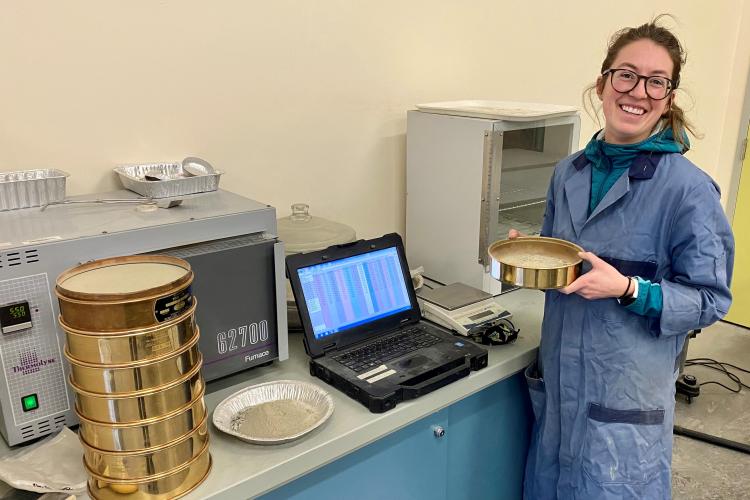Breadcrumbs
Mapping permafrost vulnerability of the Champagne and Aishihik First Nation’s Traditional Territory

Sheilany Bouchard is helping to assess the vulnerability of the Champagne and Aishihik First Nation (CAFN) Traditional Territory to climate change and permafrost degradation by analyzing sediment found in permafrost cores. Bouchard is working as a student researcher for the Permafrost and Geoscience research program on this permafrost characterization and mapping project in partnership with CAFN.
Permafrost is ground that has remained at or below 0°C for at least 2 consecutive years, and as a result of climate change, permafrost thaw is destabilizing landscapes and infrastructure. This research will provide information on priorities set by the CAFN government such as water quality, lake health, fish and wildlife health, contaminants, permafrost thaw, and infrastructure.
As pictured, Sheilany is weighing sieves containing sediment collected from permafrost cores. This analysis allows the team to determine the quantity of the different grain-size fractions present in the permafrost samples. The type and proportion of permafrost sediment helps us understand how vulnerable the ground is to thaw or its susceptibility to frost. This information helps to plan and prepare for change.
Written by student communications assistant Naomi Dedon.